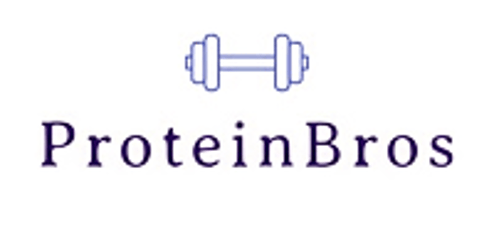Best Weightlifting Belts for Support and Stability: Top Picks for 2025
Weightlifting belts provide crucial support and stability during heavy lifts. They help maintain proper form, reduce the risk of injury, and can even boost performance. Choosing the right belt is essential for maximizing these benefits. Learn more here!
12/17/20246 min read
Weightlifting belts provide crucial support and stability during heavy lifts. They help maintain proper form, reduce the risk of injury, and can even boost performance. Choosing the right belt is essential for maximizing these benefits.
The best weightlifting belts are made from high-quality leather or nylon, offering a balance of durability and flexibility. They typically feature a width of 4 inches and a thickness between 10-13 millimeters. Popular brands like Inzer, SBD, and Rogue produce top-rated options for both powerlifters and Olympic weightlifters.
Factors to consider when selecting a weightlifting belt include material, closure type, and intended use. Leather belts offer superior rigidity, while nylon belts provide more flexibility. Lever closures allow for quick adjustments, whereas prong closures offer more precise fits. The ideal belt depends on individual preferences and specific lifting needs.
Importance of Choosing the Right Weightlifting Belt
Selecting an appropriate weightlifting belt is crucial for athletes and fitness enthusiasts. The right belt provides essential support and stability during heavy lifts, impacting both safety and performance.
Injury Prevention
A well-fitted weightlifting belt helps protect against lower back injuries. It creates intra-abdominal pressure, reducing strain on the spine during lifts. This pressure acts as a natural brace, supporting the lower back and minimizing the risk of herniated discs or muscle strains.
Proper belt use encourages correct form and posture. It serves as a tactile reminder to maintain a neutral spine position throughout exercises. This consistent positioning decreases the likelihood of injuries caused by poor technique or overextension.
For powerlifters and Olympic weightlifters, a quality belt becomes even more critical. These athletes regularly handle extreme loads, making proper support essential for long-term joint and muscle health.
Enhanced Performance
The right weightlifting belt can significantly boost lifting performance. It provides a stable surface for core muscles to push against, increasing overall tension and power output. This added stability often translates to heavier lifts and improved personal records.
Many lifters report feeling more confident with a belt. This psychological edge can lead to attempting and succeeding at higher weights. The belt acts as both physical and mental support during challenging lifts.
Belts also help maintain proper breathing techniques. By creating a firm surface to brace against, they facilitate the Valsalva maneuver - a breathing method that further increases intra-abdominal pressure and stability.
Core Stability and Support
A weightlifting belt enhances core engagement during lifts. It provides external feedback, encouraging lifters to actively tighten their core muscles. This increased activation leads to better overall stability and control throughout movements.
The belt's support allows for more efficient force transfer from the lower body to the upper body. This improved kinetic chain results in smoother, more powerful lifts. Lifters often experience better balance and reduced swaying during exercises.
Regular use of a weightlifting belt can actually strengthen core muscles over time. The constant engagement required to brace against the belt leads to increased muscle activation and development in the abdominal and lower back regions.
Types of Weightlifting Belts
Weightlifting belts come in several varieties, each designed to provide support and stability during heavy lifts. The main types are leather, nylon, and Velcro belts, each with distinct characteristics suited for different lifting needs.
Leather Belts
Leather weightlifting belts offer maximum rigidity and support. They are typically 10-13mm thick and 4 inches wide, providing substantial pressure against the abdominal wall. This design helps lifters maintain proper form during squats and deadlifts.
Leather belts often feature a single-prong or double-prong buckle closure. They require a break-in period to conform to the user's body shape. Once broken in, leather belts offer unparalleled durability and longevity.
These belts are favored by powerlifters and Olympic weightlifters for their ability to support extremely heavy loads. However, they can be less comfortable for beginners or those performing high-rep exercises.
Nylon Belts
Nylon weightlifting belts offer a more flexible alternative to leather. They typically range from 4-6 inches in width and have varying thicknesses. Nylon belts provide moderate support while allowing for greater range of motion.
These belts often feature a quick-release buckle for easy on and off. They're more comfortable for extended wear and suitable for CrossFit-style workouts or Olympic lifts that require more mobility.
Nylon belts are generally more affordable than leather options. They're ideal for beginners or intermediate lifters who want support without the rigidity of leather. Some nylon belts incorporate foam padding for added comfort.
Velcro Belts
Velcro weightlifting belts offer the most adjustability and convenience. They typically feature a wide Velcro strap that allows for precise tightness control. These belts are usually 4-6 inches wide and made from nylon or similar synthetic materials.
The ease of adjustment makes Velcro belts suitable for lifters who frequently change their belt tightness between exercises. They're popular in CrossFit and functional fitness settings where quick transitions are important.
Velcro belts provide moderate support, similar to nylon belts. They're comfortable for a wide range of movements and body types. However, the Velcro may wear out faster than buckle closures on leather or nylon belts.
Key Features to Consider
When selecting a weightlifting belt, several crucial factors can impact its effectiveness and comfort. These elements play a vital role in determining the right belt for your needs.
Belt Width
Belt width affects stability and range of motion. Wider belts (4-6 inches) provide more support for heavy lifts like squats and deadlifts. They distribute pressure across a larger area of the abdomen and lower back.
Narrower belts (2-3 inches) allow greater mobility, making them suitable for Olympic lifts or CrossFit. They're less restrictive during overhead movements and quick transitions.
Some belts feature a tapered design, wider at the back and narrower in front. This style offers a balance of support and flexibility.
Buckle Type
Prong buckles are common and easy to use. Single-prong designs allow quick adjustments, while double-prong versions offer extra security.
Lever buckles provide fast on/off action and consistent tightness. They're ideal for powerlifters who need rapid adjustments between sets.
Velcro closures offer infinite adjustability and are lightweight. They're popular in CrossFit and functional fitness settings.
Material and Build Quality
Leather belts are durable and provide rigid support. Full-grain leather is the strongest, while suede offers a softer feel.
Nylon belts are lightweight and flexible. They're often more affordable and suitable for varied workouts.
Build quality matters for longevity. Look for reinforced stitching, rolled edges, and quality hardware.
Some belts use a combination of materials, like a leather exterior with a suede lining for comfort.
Fit and Comfort
A proper fit is crucial for effective support. Belts should be snug but not restrictive. Many manufacturers offer sizing guides based on waist measurements.
Break-in period varies by material. Leather belts may require time to soften and conform to your body.
Internal padding can enhance comfort, especially during long training sessions. Some belts feature cushioned linings or beveled edges to prevent digging into the skin.
Consider the belt's thickness. Thicker belts offer more support but may feel bulkier. Thinner options provide a more natural feel.
Top-Rated Weightlifting Belts
Weightlifting belts come in various styles and materials to suit different needs and preferences. The top-rated options balance durability, comfort, and performance.
Premium Leather Options
Pioneer Fitness 13mm Thick Power Lifting Belt stands out for its high-quality leather construction. It offers exceptional support and lasts for years with proper care. The 13mm thickness provides maximum stability for heavy lifts.
Inzer Forever Lever Belt is another premium choice. Its lever closure system allows for quick adjustments between sets. The belt maintains its shape well over time, making it a favorite among powerlifters.
SBD Lever Belt combines style with functionality. Its patented lever design offers a secure fit. The belt's width tapers from back to front, enhancing comfort during lifts.
Budget-Friendly Choices
Gymreapers weight lifting power belt provides complete support and protection for your back, spine, and core for squats, deadlifts, and any form of compound movements.
Harbinger 4-Inch Nylon Weightlifting Belt is an affordable option for those new to lifting. Its lightweight design suits various exercises. The belt features a steel roller buckle for easy adjustments.
Dark Iron Fitness Genuine Leather Pro Weight Lifting Belt balances quality and affordability. It's made from buffalo hide, offering durability at a lower price point than some premium options.
Belts for Competitive Athletes
Eleiko Olympic Weightlifting Belt meets IWF standards for competition use. Its tapered design allows for a full range of motion during Olympic lifts. The belt's sturdy construction withstands intense training sessions.
Rehband Core Line Back Support is popular among CrossFit athletes. Its flexible material provides support without restricting movement. The belt's low profile design works well for multiple exercises.
Rogue USA Nylon Lifting Belt is approved for use in USAW competitions. Its 4-inch width offers ample support for both Olympic lifts and powerlifting movements. The belt's quick-release buckle allows for fast adjustments between lifts.
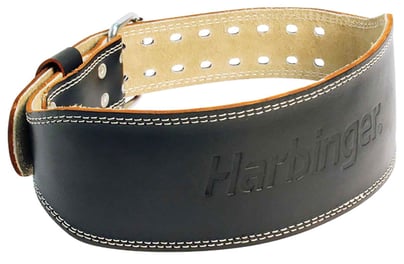

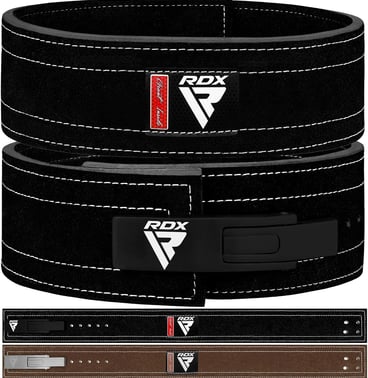

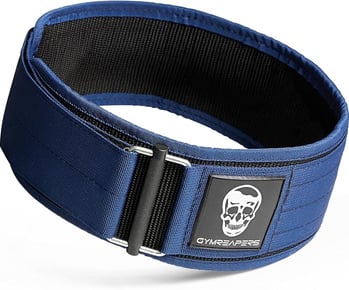


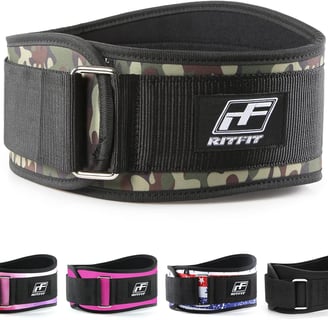
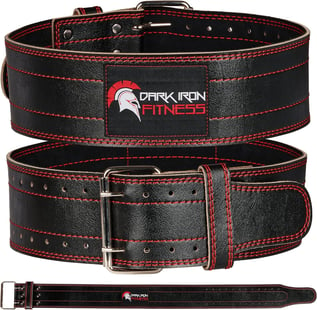

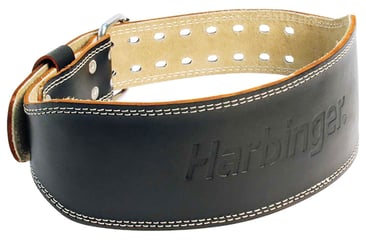

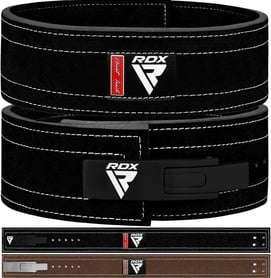

Additional info
Social media coming soon!
Contact us
Newsletter coming soon!
© 2024. All rights reserved.
